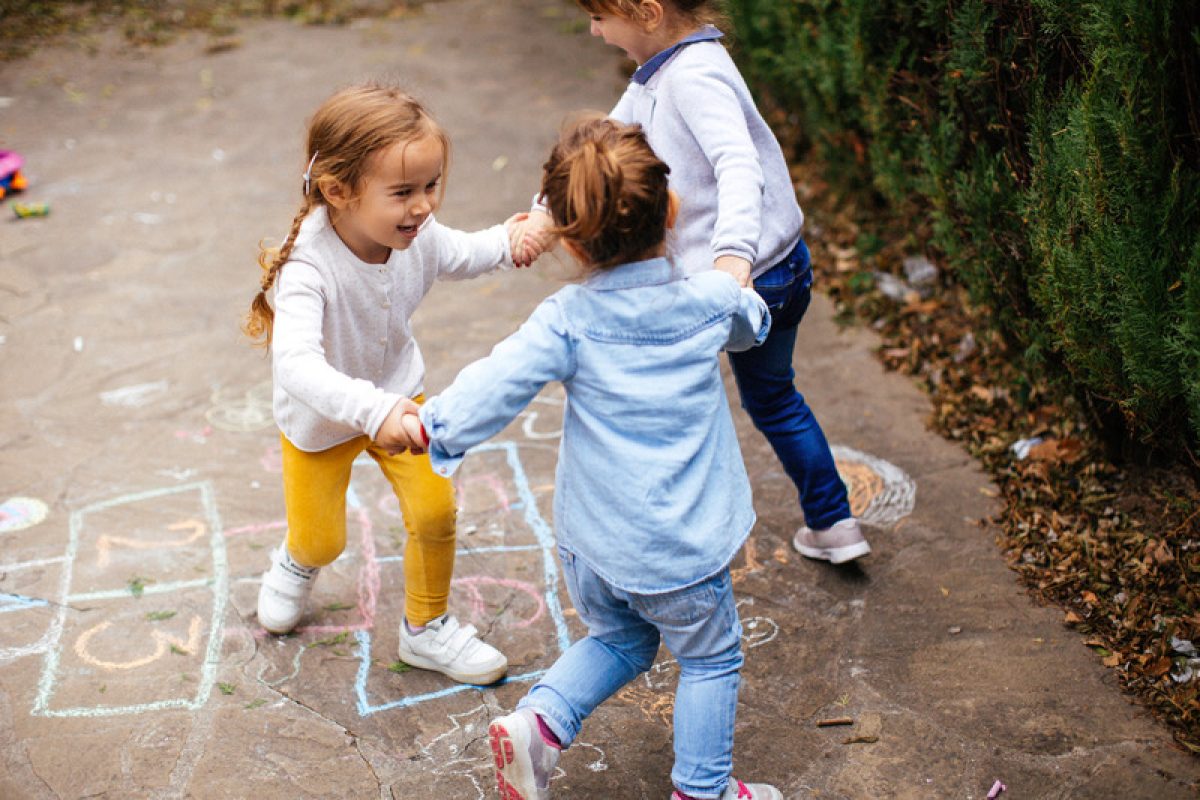Fitness for Toddlers and Preschoolers
Nemours Children's Health
May 16, 2024

Did you know that May is Physical Fitness and Sports Month? As toddlers and preschoolers build new skills and have a greater ability to move around more, it’s important that caregivers encourage physical activity and make sure they get the amount necessary for their fitness. Our partners at Nemours share information on how much activity toddlers and preschoolers require and they provide tips on some fun games you can tryout in your child care.
2-to-3-Year-Olds
Kids this age are walking and running, kicking, and throwing. They're naturally active, so be sure to provide lots of chances for your child to practice and build on these skills.
How much is enough? Physical activity guidelines for toddlers recommend that each day they:
- get at least 30 minutes of structured (adult-led) physical activity
- get at least 60 minutes of unstructured (active free play) physical activity
- not be inactive for more than 1 hour at a time except when sleeping
What They Can Do
It's important to understand what kids can do and what skills are appropriate for this age. By age 2, toddlers should be able to walk and run well. They might be able to kick a ball and jump in place with both feet. By age 3, toddlers usually can balance briefly on one foot, kick a ball forward, throw a ball overhand, catch a ball, and pedal a tricycle.
Keep these skills in mind when encouraging your child to be active. Play games together and provide age-appropriate active toys, such as balls, push and pull toys, and riding vehicles. Through practice, toddlers will continue to improve and refine their motor skills.
Fun Games
- Walk like a penguin, hop like a frog, or imitate other animals' movements.
- Sit facing each other and hold hands. Rock back and forth and sing the song "Row, row, row your boat."
- Bend at the waist and touch the ground. Walk your hands forward and inch along like a caterpillar.
- Sit on the ground and let your children step over your legs or make a bridge with your body and let your children crawl under.
- Play follow the leader, "Ring around the rosy," and other similar games.
- Listen to music and dance together.
The possibilities are endless — come up with your own active ideas or follow your child's lead. Also, limit the amount of time your child spends watching TV (including DVDs and videos) or playing on a computer, tablet, or smartphone.
3-to-5-Year-Olds
By the time kids are 3 to 5 years old, their physical skills, like running, jumping, kicking, and throwing, have come a long way. Now they'll continue to refine these skills and build on them to learn more complex ones.
Take advantage of your child's natural tendency to be active. Regular physical activity promotes healthy growth and development and learning new skills builds confidence.
Physical activity guidelines recommend that preschoolers:
- are physically active throughout the day
- move and engage in both active play and structured (adult-led) physical activity
- do activities such as jumping, hopping, and tumbling to strengthen bones
What They Can Do
Preschoolers should participate in a variety of fun and challenging physical activities that help build skills and coordination but aren't beyond their abilities. Preschoolers should be active about 3 hours a day, including light, moderate, and vigorous activities.
Kids this age are learning to hop, skip, and jump forward, and are eager to show off how they can balance on one foot, catch a ball, or do a somersault. Preschoolers also might enjoy swimming, playing on a playground, dancing, and riding a tricycle or bicycle with training wheels.
Fun Games
- playing games such as "Duck, Duck, Goose" or "Follow the Leader," then mixing it up with jumping, hopping, and walking backward
- kicking a ball back and forth or into a goal
- hitting a ball off a T-ball stand
- playing freeze dance or freeze tag
- Treasure hunt: Hide "treasures" throughout the house and provide clues to their locations.
- Obstacle course: Set up an obstacle course with chairs, boxes, and toys for the kids to go over, under, through, and around.
- Soft-ball games: Use soft foam balls to play indoor basketball, bowling, soccer, or catch. You can even use balloons to play volleyball or catch.
For more information, read Nemours’ blogs on Fitness and Your 2-to-3-Year-Old and Fitness and Your 3-to-5-Year-Old.
